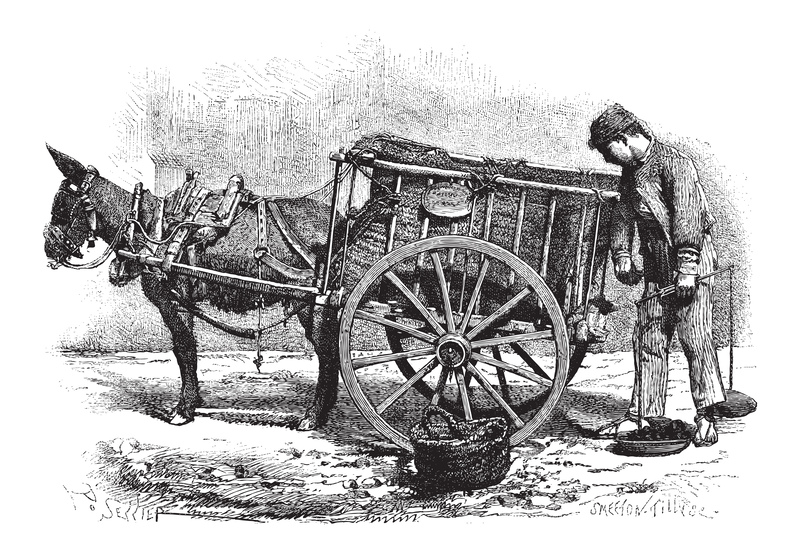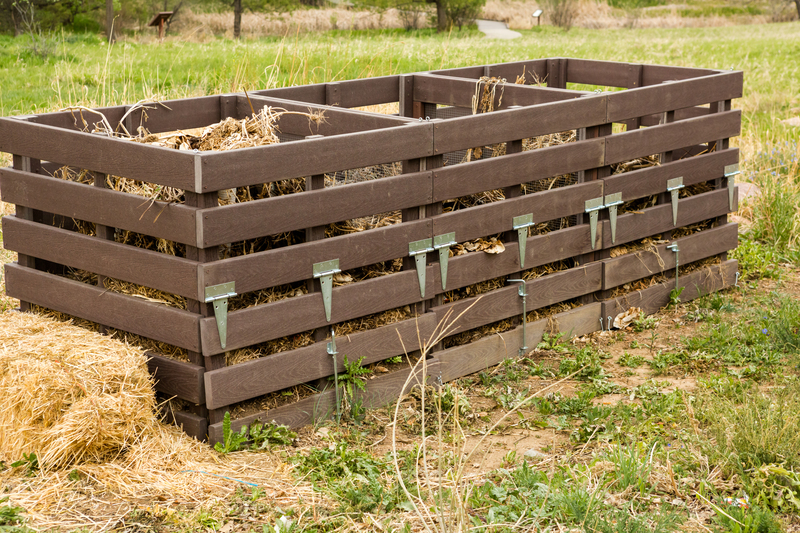Eco-Friendly Upcycling Projects to Transform Garbage into Gorgeous Pieces
Are you looking for creative, sustainable ways to reduce waste at home? Repurposing discarded items in eco-friendly upcycling projects is a rewarding and planet-positive approach. Not only does it help minimize landfill waste, but it also allows you to transform ordinary garbage into stunning, functional, and unique masterpieces. In this comprehensive guide, we'll explore the wonders of upcycling, smart tips for getting started, and a wide array of creative project ideas to inspire your own transformation journey.

The Art of Upcycling: Turning Trash into Treasure
Upcycling is the process of taking items or materials that are no longer wanted and giving them a new life and higher value. Unlike recycling--which typically breaks materials down to their raw state--upcycling maintains the integrity of the original item while improving its function, purpose, or aesthetic appeal. By embracing the concept of eco-friendly upcycling projects, you contribute to keeping resources in circulation, conserving energy, and reducing your overall carbon footprint.
- Recycling vs. Upcycling: Recycling is about breaking down; upcycling is about building up!
- Eco-upcycling supports the environment and unleashes creative potential.
- Every upcycled creation is a bold statement against the throw-away culture.
Why Choose Upcycling for a Greener Lifestyle?
*Eco-friendly upcycling* doesn't just save items from landfill; it offers several personal and environmental benefits:
- Reduces waste: Diverts household garbage from landfill sites.
- Saves money: Gives new life to items you already own, reducing spending.
- Promotes creativity: Encourages innovative thinking and hands-on crafting.
- Conserves resources: Less demand for new products preserves raw materials and energy.
How to Start Your Upcycling Journey
Starting with eco-friendly upcycling crafts isn't as daunting as it might seem. Most projects can be accomplished with basic tools and common household items. Here's how to start:
- Identify "junk" materials: Bottles, cans, fabric scraps, broken furniture, packaging, and old clothing are perfect candidates for upcycling.
- Get inspired: Browse social media, blogs, or DIY sites for upcycle project inspiration.
- Gather tools & supplies: Scissors, glue, paint, nails, a drill, and some basic hardware are usually enough.
- Plan your transformation: Imagine what the object could become--its shape, potential uses, and aesthetics.
- Start small: Begin with easy projects before advancing to more complex transformations.
Top Eco-Friendly Upcycling Project Ideas
To get you started, here are popular and practical upcycling projects to transform garbage into gorgeous, functional pieces.
1. Glass Bottle Vases & Lights
- Save glass jars and bottles from the trash.
- Clean thoroughly and remove all labels (warm, soapy water does the trick).
- Paint, decorate, or etch designs for a unique touch.
- Insert fairy lights for a beautiful luminary, or use as a vase for fresh or dried flowers.
2. Wooden Pallet Furniture
- Old wooden pallets become coffee tables, bookshelves, garden benches, or plant stands.
- Sand down to smooth out rough edges.
- Stain, paint, or seal for weather resistance and color.
- Combine with wheels or casters for mobile furniture.
3. Tin Can Organizers and Planters
- Wash and de-label food cans. Punch drainage holes for planters.
- Decorate with paint, fabric scraps, twine, or washi tape.
- Tin cans make sturdy desktop pen holders, utensil caddies, or herb gardens for kitchen windowsills.
4. T-shirt Tote Bags
- Cut the sleeves and neckline of old t-shirts to create a basic tote shape.
- Tie or sew the bottom shut for a reusable shopping bag.
- Decorate with eco-friendly fabric paint or screen prints for extra flair.
5. Upcycled Plastic Bottle Bird Feeders
- Clean and repurpose plastic drink bottles as bird feeders for your yard.
- Cut entry holes, add perches from sticks or dowels, fill with seed, and hang from a tree or hook.
- Decorate with waterproof paints to attract feathered friends.
6. Broken China Mosaic Art
- Turn shattered dishes into beautiful mosaics for tables, picture frames, or garden stones.
- Carefully break china into pieces; use tile glue and grout to arrange your design.
- The result: a one-of-a-kind artwork with sentimental value.
7. Furniture Makeovers - Turning Trash to Treasure
- Salvage abandoned or broken furniture curbside or from thrift stores.
- Repair, sand, and repaint or reupholster to fit your decor style.
- Mix vintage and modern elements for a standout piece.
8. Upcycled Denim Projects
- Repurpose old jeans into sturdy backpacks, aprons, or quilted blankets.
- Cut pockets to use as wall organizers or quirky patchwork details.
- Frayed edges and colorful stitching add rustic charm.
9. Cardboard Creations
- Transform boxes into playhouses, cat furniture, or stylish organizers.
- Paint and decorate for a lasting finish.
- Perfect for kids' crafts or creative storage.
10. Bottle Cap Art & Magnets
- Collect colorful plastic or metal bottle caps.
- Glue onto a canvas, wooden board, or magnets for the fridge.
- Create animals, flowers, patterns, or whimsical scenes.
Sustainable Upcycling Tips and Tricks
Make your upcycling adventures even more environmentally friendly and enjoyable by considering these best practices:
- Choose non-toxic paints and adhesives: Prioritize water-based, low-VOC options.
- Use reclaimed hardware: Save screws, knobs, or hinges from old projects.
- Share and swap materials: Trade supplies with friends or join local upcycling communities.
- Document your process: Take photos or notes to refine your technique and inspire others.
Eco-Friendly Upcycling for Every Room in Your Home
You can incorporate upcycled style in virtually any part of your living space:
- Kitchen: Glass jar storage, tin can utensil holders, reclaimed wood spice racks.
- Living Room: Pallet coffee tables, bottle lamps, mosaic coasters.
- Bedroom: Denim pillow covers, wooden crate nightstands, repainted dressers.
- Garden/Outdoor: Tire planters, upcycled birdhouses, mosaic stepping stones.
- Kids' Spaces: Cardboard playhouses, bottle cap art, painted tin can drums.
Creative Upcycling Beyond the Home
*Eco-conscious upcycling* isn't limited to home decor. Many eco-enthusiasts and entrepreneurs turn their talents toward:
- Art installations made from ocean plastics or scrap materials.
- Fashion lines using upcycled fabrics and vintage finds.
- Gifts and crafts that replace mass-produced items with handmade charm.
- School or community garden projects using repurposed containers and materials.
Upcycling vs. Downcycling: What's the Difference?
It's important to distinguish *upcycling* from downcycling. Downcycling refers to converting materials into lesser-quality or lower-value products, usually as part of the traditional recycling system (e.g., turning high-grade office paper into cardboard). In contrast, eco-friendly upcycling projects maintain or increase the value, utility, or beauty of waste items--truly turning trash into treasure!
Eco-Friendly Upcycling: A Step Toward a Greener Planet
Choose to make a positive impact with your creativity! Upcycling diverts tons of garbage from landfills worldwide and avoids the energy costs of recycling or manufacturing new items. When you share, gift, or even sell your upcycled creations, you inspire a sustainable, value-driven mindset in your community.
- Share your projects on social media to motivate more people to join the upcycling movement.
- Shop secondhand and support local artisans specializing in sustainable upcycled goods.
- Host DIY upcycle workshops in your neighborhood or local school.
Resources for Upcycle Inspiration and Learning
Want to expand your knowledge or connect with others on your sustainability journey? Try these resources:
- DIY Upcycling Blogs: Blogs like Upcycle That, The Upcycle Movement, and Recyclart offer step-by-step tutorials.
- Social Media Groups: Join platforms like Facebook Groups or Pinterest communities dedicated to upcycling inspiration, tips, and swap meetups.
- Online Courses: Websites like Skillshare and Udemy have classes for beginners and advanced makers alike.
- Local Upcycling Workshops: Check community centers and makerspaces for hands-on learning opportunities.

Final Thoughts: Transform Garbage into Gorgeous Pieces with Upcycling
Upcycling is not just an eco-trend--it's a practical lifestyle shift that everyone can embrace. By reimagining waste as an opportunity, you'll create gorgeous, one-of-a-kind pieces that reflect your personality and care for the Earth. Every upcycled project is a small but mighty step toward a more sustainable world!
- Start simple--your creativity and confidence will grow with each project.
- Share your upcycling journey to encourage family and friends.
- Remember: Every meaningful transformation starts with one piece of garbage and a little imagination.
Frequently Asked Questions About Eco-Friendly Upcycling
-
What materials can be upcycled?
Almost any household waste item--plastic, glass, metal, fabric, furniture, electronics--can be creatively upcycled. -
Is upcycling expensive?
Upcycling often saves money by reusing what you already have. Some basic supplies (paint, glue, tools) may be needed, but the cost is much lower than buying new. -
Where can I share my eco-friendly upcycling projects?
Share photos and tutorials on Instagram, Pinterest, Facebook Groups, or local upcycle clubs.
Embrace eco-friendly upcycling today--turn your garbage into gorgeous, planet-saving creations one project at a time!
